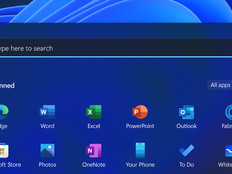AI and Smart Campuses Are Among Higher Ed Tech to Watch in 2020
It’s safe to say that technology leaders in higher education won’t be bored in 2020.
Many of the most pressing trends in IT are playing out in the university space. Colleges are leveraging artificial intelligence to drive student outcomes and adopting smart technologies to enhance campus efficiencies. They’re adapting their data centers while becoming more proactive with student lifecycle management. On the defensive side, IT is battling a rising tide of phishing and ransomware.
Here are five trends to watch in higher education IT in the coming year.
MORE FROM EDTECH: Emotionally intelligent AI advances personalization on campus.
Colleges Look to AI to Power Predictive Analytics
Universities see promise in AI as a means to drive student outcomes and to empower adaptive learning. While much has been said about the potential here, actual adoption hasn’t hit the mainstream: Rather, higher education stands poised at the starting gate.
“People are experimenting and dabbling, but as we look at the data, we are finding that AI is influencing IT strategy at only about 13 percent of colleges and universities at this time,” says Susan Grajek, vice president for communities and research at EDUCAUSE. “Another 36 percent are tracking it, but they aren’t doing anything.”
While adoption may be limited, interest will be in high in 2020 as colleges seek to better understand the potential for predictive analytics.
“They are hoping that AI will help them improve enrollment, to pick the people who are really the best match for the institution,” Grajek says. “They are hoping that AI can directly help students, giving them advice and counsel on how they are doing and ultimately helping them to graduate on time.”
Although we may see limited implementations arise in 2020, it’s certainly on the upswing, along with efforts to leverage AI in adaptive learning. Look to late 2020 to see these efforts start to take hold at institutions that are early adopters.
MORE FROM EDTECH: AI has potential to ease campus budget burdens.
Blended Data Centers Continue to Support Campuswide Computing
As part of the overall migration to the cloud, many institutions continue to take a blended approach to data center management, combining public cloud resources with on-premises solutions.
“Right now, when we set up a virtual machine, it is using up resources. It sits on a physical box; it is dedicated to a particular person or project,” says Allan Chen, an executive committee member of the Association for Computing Machinery’s Special Interest Group on University and College Computing Services (SIGUCCS). “With the cloud, you have access to thousands of servers, and they can be allocated and can spin up and down based on usage. It’s just a much larger pool of resources.”
So far, colleges have tended to shift partial workloads to the cloud, using Microsoft Azure, for example, to manage the large-volume research needs of a particular professor or group. In 2020, higher education will likely seek to broaden and expand those deployments as part of a blended data center solution, combining cloud with on-premises for both academic needs and in support of institutional processes.
“Rather than just move a professor’s research into the cloud, we will see core services moving to the cloud: our name services, our directory services, our identity management,” Chen says. “Partly, this will be a backup to our on-premises solutions, leveraging cloud’s availability so that if our own systems go down, we can still log in and connect.”
Phishing and Ransomware Remain Key Campus Threats
Not surprisingly, colleges continue to struggle with cyber issues. A white paper from SecurityScorecard, the “2018 Education Cybersecurity Report,” ranks higher education last out of 17 industries in terms of overall cybersecurity.
At the same time, colleges remain a prime target for cybercriminals, from run-of-the-mill data thieves to sophisticated nation-state actors. According to Verizon’s “2019 Data Breach Investigations Report,” espionage is the motive behind 11 percent of attacks on educational institutions.
In practical terms, phishing and ransomware will continue to be top-level concerns in the coming year. “Phishing is always first and foremost. It is still the main attack vector. Why? Because it works,” says John Ramsey, CISO for the National Student Clearinghouse. “In higher education, you have such a diverse user base. You have staff, researchers and students. In terms of assets, you have tons of personally identifiable information and tons of intellectual property.”
All that makes higher education a tempting target, and with credentials compromised through phishing exploits, ransomware becomes an ever more likely attack scenario.
In the coming year, many will look to multifactor authentication as the best form of defense.
“Implementing this across the institution, regardless of the user base, is probably the single most effective counter-measure,” says Ramsey. “It’s definitely got the biggest return on investment.”
Colleges Look to CRM Solutions for Student Lifecycle Management
This year will also see colleges intensify the push to adopt customer relationship management solutions for student lifecycle management. These software tools promise to give administrators a holistic view of the student experience and drive successful outcomes.
“They can give us a kind of understanding that we never used to have,” Grajek says.
Right now, just 6 percent of colleges have CRM to cover the full student lifecycle, she says. Another 21 percent have CRM deployed to some degree within the institution and plan to expand it, while another 30 percent have full lifecycle deployments in the works, according to EDUCAUSE research.
“Universities want to do that in order to enroll the students who will be the best fit for that institution,” Grajek says. “They want to use analytics to understand the characteristics of the students who are most likely to accept. They want to see what history tells them about the students who are likely to accept and enroll and complete in a timely fashion.”
MORE FROM EDTECH: Colleges make ideal partners for Smart City initiatives.
Smart Campus Technologies Offer Cost-Savings Potential
In parallel with the rise of municipal smart cities, higher education continues to push toward the smart campus, a vision of a digitally interconnected learning space in which data and devices combine to enhance the student experience. Colleges need to get smart to stay competitive.
“Higher education is faced with complex disruption from a changing student body who are digital natives expecting a more intuitive experience that fosters positive outcomes,” according to a recent Deloitte report. “This is where a digital campus, also referred to as a smart campus, plays a role in transforming the lives it touches.”
Many college IT leaders are praising the virtues of connectivity. In a study by the Center for Digital Education and CenturyLink, 50 percent of higher education officials agreed smart campus technology could cut costs, and 43 percent said it could help to boost student retention.
The emerging vision of the smart campus mirrors evolutions already playing out in the commercial sector.
“Innovations used in smart banking, smart retail, smart digital workplaces, and smart venues like hospitals and stadiums could be extended to higher education campuses,” Deloitte notes.
A data-driven campus could help administrators save money by streamlining costs. Connectivity could make it easier and more intuitive for students and faculty to communicate and to navigate university systems. Data could enhance public safety through reporting and alert systems. In the classroom, improved connectivity could improve learning outcomes.
In 2020, higher education will likely continue its smart-campus push, with an eye toward enhanced data streams as a core tool for improved responsiveness and efficiencies.









